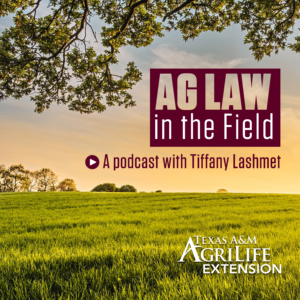*This article is not a substitute for the advice of an attorney.*
In addition to my usual disclaimer, please not that I am not an expert on the Clean Water Act or the EPA’s regulations implementing the Act. This blog is intended merely to highlight the current issue and provide basic information.
The Environmental Protection Agency recently drafted a proposed rule defining “waters of the United States” with regard to its interpretation of the Clean Water Act. This proposed amendment has caused a great deal of controversy.
The Clean Water Act
Passed in 1972, the Clean Water Act provides federal regulatory jurisdiction over “waters of the United States.” The CWA does not define this term, but since 1986, the EPA’s regulations have interpreted “waters of the United States” as traditional navigable waters, interstate waters, all other waters that could affect interstate or foreign commerce, impoundments of waters of the United States, tributaries, the territorial seas, and adjacent wetlands.
The United States Supreme Court has frequently been called upon to weigh in on the proper interpretation of “waters of the United States.” In 1985, the Court broadly construed the phrase as including wetlands adjacent to traditional navigable waters in Michigan in United States v. Riverside Bayview Homes. In 2001, the issue was again before the Court in Solid Waste Agency of N. Cook County v. U.S. Army Corps of Engineers. There, the Court found that isolated, non-navigable intrastate ponds used by migratory birds were not covered by the CWA. In making this finding, the Court stated that the difference between this case and Riverside Bayview Homes was the lack of a “significant nexus” between the ponds and the navigable waters. Finally, in 2006, the Supreme Court decided (in a plurality opinion on 4 justices) Rapanos v. United States, holding that waters of the United States covered “relatively permanent, standing or continuously flowing bodies of water” connected to navigable waters. The opinion noted that this did not necessarily exclude streams, rivers or lakes that might go dry in extraordinary circumstances like a drought. A concurring opinion by Justice Kennedy would have defined “waters of the United States” by applying the “significant nexus standard.”
The Proposed Rule
The proposed rule, totaling 88 pages in the Federal Register, may be found here.
Essentially, the EPA proposes to define “waters of the United States” as including the prior definition described above, but to also include all tributaries of traditional navigable waters, interstate waters, territorial seas, and impoundments of such tributaries; wetlands adjacent to the foregoing; and waters other than wetlands that are adjacent to other jurisdictional waters. Additionally, the rule would add a category of “other waters” that have a significant nexus to protected waters, determined on a case-by-case basis. [Review summary of the proposed changes here and here.]
Choosing Sides
The EPA maintains that the proposed rule is merely a clarification of its existing power under the CWA. The agency maintains that this clarification is necessary in light of Supreme Court decisions in U.S. v. Riverside Bayview, Rapanos v. United States, and Solid Waste Agency of N. Cook County v. U.S. Army Corps of Engineers. The EPA believes that the case-by-case approach adopted in these cases leaves too much uncertainty under the CWA. As stated by the EPA, “This proposal would enhance protection for the nation’s public health and aquatic resources, and increase CWA program predictability and consistency by increasing clarity as to the scope of ‘waters of the United States’ protected under the Act.” The EPA’s website contains a host of information on the rulemaking activity, available here.
Several other groups believe that the rule seeks to modify–specifically to increase–the EPA’s jurisdiction. American Farm Bureau Federation President Bob Stallman says, “This rule is an end run around congressional intent and rulings by the U.S. Supreme Court, alike. Congress and the courts have both said that the 50 states, not EPA, have power to decide how farming and other land uses should be restricted.” [Read Farm Bureau statement here.] Several Republican lawmakers have also spoken out against the rule arguing that it is a “power grab” by the EPA and will negatively impact landowners and the agriculture industry. [Read article here.]
Where Are We Now?
This proposed rule was published in the Federal Register on April 21, 2014. This triggers the 90-day comment period during which the public is invited to submit comments to the EPA either in support of or against the proposed rule. Comments must be submitted by July 21, 2014 and may be made via website, email, regular mail, or hand delivery. The relevant information for submitting comments may be found in the Federal Register (page 2), located here.













